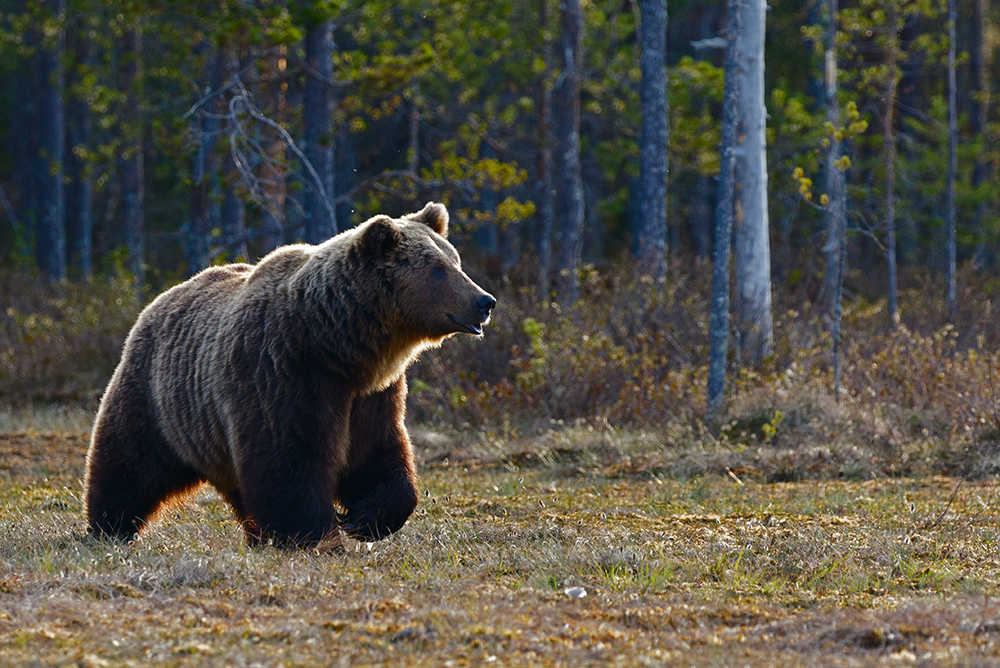British Filmmaker John Downer has created artificial monkeys, wolves, hippos, turtles, alligators, etc., to observe appropriate wildlife and obtain spectacular images. His well-known robots are very intricately designed and resemble the animals they mimic in almost every detail. It is not necessary to resort to such technically elaborate and artistically demanding means for all species. USA Today reports in a recent article about a robot called ECHO. “ECHO is a remote-controlled ground robot that silently spies on the emperor penguin colony in Atka Bay. The robot is being monitored by the Single Penguin Observation and Tracking observatory. Both the SPOT observatory, which is also remote-operated through a satellite link, and the ECHO robot capture photographs and videos of animal population in the Arctic.” (USA Today, May 6, 2022) ECHO does not resemble a penguin in any way. It is a yellow vehicle with four thick wheels. But as a video shows, the animals seem to have gotten used to it. It comes very close to them without scaring them. Wildlife monitoring using robots is becoming increasingly important, and obviously very different types are being considered.
Machines and Robots for Animal Welfare
On 25 February 2022, the article “Passive, Active, and Proactive Systems and Machines for the Protection and Preservation of Animals and Animal Species” by Oliver Bendel was published in Frontiers in Animal Science. From the abstract: “Digitalization and automation are expanding into many areas, resulting in more widespread use of partially and fully autonomous machines and robots. At the same time, environmental and other crises and disasters are on the rise, the world population is growing, and animals are losing their habitat. Increasingly, machines and robots such as agricultural vehicles, autonomous cars, robotic lawnmowers, or social robots are encountering animals of all kinds. In the process, the latter are injured or killed. Some machines can be designed so that this does not happen. Relevant disciplines and research areas briefly introduced here are machine ethics, social robotics, animal-machine interaction, and animal-computer interaction. In addition, animal welfare is important. Passive and active machines—as they are called in this review—are already appearing and help to observe and protect animals. Proactive machines may play a role in the future. They could use the possibilities of full automation and autonomy to save animals from suffering in agriculture or in the wild. During crises and disasters and in extensive nature reserves, they could observe, care for, and protect animals. The review provides initial considerations on active, passive, and proactive machines and how they can be used in an animal preservation context while bearing in mind recent technical and global developments.” The article is part of the research topic “Animal-Computer Interaction and Beyond: The Benefits of Animal-Centered Research and Design” and can be accessed at www.frontiersin.org/articles/10.3389/fanim.2022.834634/full.
AI at the Service of Animals and Biodiversity
“L’intelligence artificielle au service de l’animal et de la biodiversité” (“Artificial intelligence at the service of animals and biodiversity”) is the title of a webinar that will take place on 5 November 2021 from 10:30 – 12:00 via us02web.zoom.us/webinar/register/WN_SJjYGx7qQt-FezEBprGMww. There are over 600 registered participants (professionals from the animal industry, health care and animal welfare, also entrepreneurs, investors, scientists, consultants, NGOs, associations). The webinar is for anyone interested in technologies with a positive impact on animals (wildlife, livestock, pets) and biodiversity. The goal is to take advantage of the opportunities that Artificial Intelligence offers alongside the many technological building blocks (Blockchain, IoT, etc.). This first webinar will be an “introduction” to AI in this specific application area. It will present use cases and be the starting point of a series of webinars. On the same day, there will be a Zoom conference from 1:30 to 2:30 pm. The title of the talk by Prof. Dr. Oliver Bendel is “Towards Animal-friendly Machines”.
Animal-Computer Interaction
Clara Mancini (The Open University) and Eleonora Nannoni (University of Bologna) are calling for abstracts and papers for the Frontiers research topic “Animal-Computer Interaction and Beyond: The Benefits of Animal-Centered Research and Design”. They are well-known representatives of a discipline closely related to animal-machine interaction. “The field of Animal-Computer Interaction (ACI) investigates how interactive technologies affect the individual animals involved; what technologies could be developed, and how they should be designed in order to improve animals’ welfare, support their activities and foster positive interspecies relationships; and how research methods could enable animal stakeholders to participate in the development of relevant technologies.” (Website Frontiers) The editors welcome submissions that contribute, but are not necessarily limited, to the following themes: 1) “Applications of animal-centered and/or interactive technologies within farming, animal research, conservation, welfare or other domains”, and 2) “Animal-centered research, design methods and frameworks that have been applied or have applicability within farming, animal research, conservation, welfare or other domains Submission information is available through the website” (Website Frontiers). More submission information is available through the Frontiers website.



